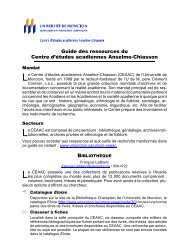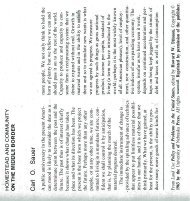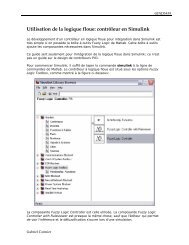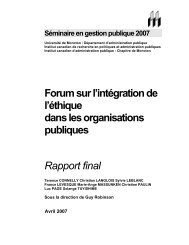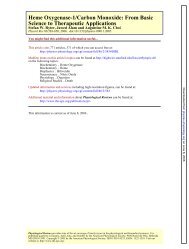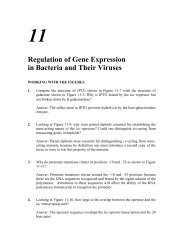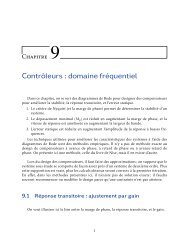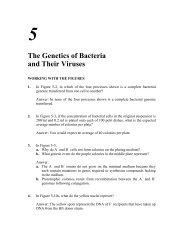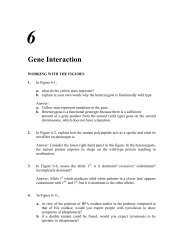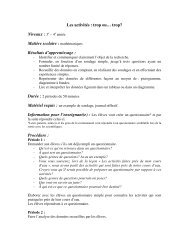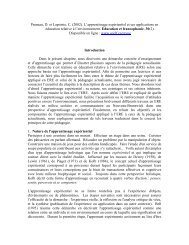IGA 8/e Chapter 2
IGA 8/e Chapter 2
IGA 8/e Chapter 2
Create successful ePaper yourself
Turn your PDF publications into a flip-book with our unique Google optimized e-Paper software.
16 <strong>Chapter</strong> Twob. What assumptions need to be made to answer part a?Answer:a. You do not expect the mutation to be recessive. This would be an exampleof a haploinsufficient gene since one copy of the wild-type allele doesproduce enough protein product for normal function.b. An important assumption would be that having five of eight units of proteinproduct would result in an observable phenotype. It also assumes that theregulation of the single wild-type allele is not affected. Finally, if the mutantallele was leaky rather than null, there might be sufficient protein functionwhen heterozygous with a wild-type allele.39. A Neurospora colony at the edge of a plate seemed to be sparse (low density) incomparison with the other colonies on the plate. This colony was thought to bea possible mutant, and so it was removed and crossed with a wild type of theopposite mating type. From this cross, 100 ascospore progeny were obtained.None of the colonies from these ascospores was sparse, all appearing to benormal. What is the simplest explanation of this result? How would you testyour explanation? (Note: Neurospora is haploid.)Answer: The simplest explanation is that the abnormal phenotype was not dueto an genetic change. Perhaps the environment (edge of plate) was lessfavorable for growth. Since Neurospora is haploid and forms ascospores,isolating individual asci from a cross of the possible “mutant” to wild type andindividually growing the spores should yield 50 percent wild-type and 50percent “mutant” colonies. If all spores yield wild-type colonies, the low densityphenotype was not heritable.40. From a large-scale screen of many plants of Collinsia grandiflora, a plant withthree cotyledons was discovered (normally, there are two cotyledons). Thisplant was crossed with a normal pure-breeding wild-type plant, and 600 seedsfrom this cross were planted. There were 298 plants with two cotyledons and302 with three cotyledons. What can be deduced about the inheritance of threecotyledons? Invent gene symbols as part of your explanation.Answer: Since half of the F 1 progeny are mutant, it suggests that the mutationthat results in three cotyledons is dominant, and the original mutant washeterozygous. Assuming C = the mutant allele and c = the wild-type allele, thecross becomes:P C/c c/cF 1 C/c three cotyledonsc/c two cotyledons41. In the plant Arabidopsis thaliana, a geneticist is interested in the development




